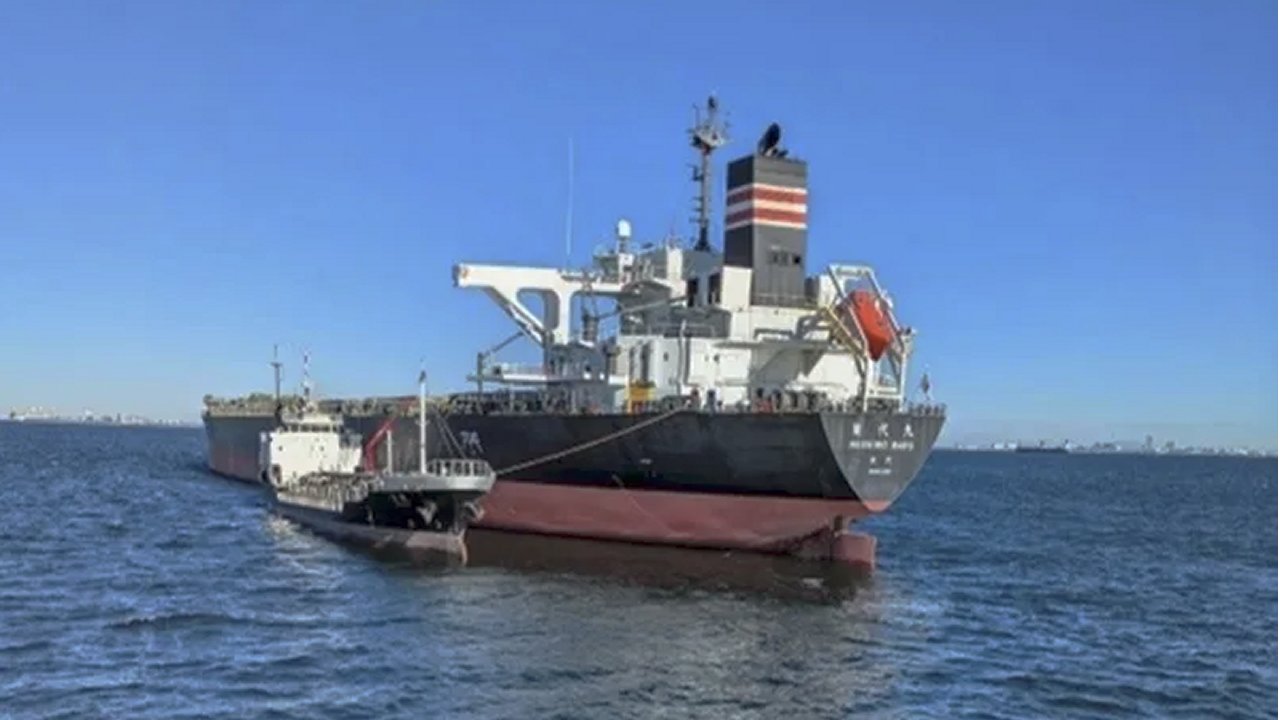
 |
On February 9, NYK Line embarked on a landmark test run involving biofuel on its coal carrier, the Noshiro Maru, which is operated for Tohoku Electric Power. It was the first time in Japan that a coal carrier was used to test biofuel for a domestic utility company.
The delivery of biofuel to the vessel was performed by Mitsubishi Corporation Energy Co., Ltd in the country's Keihin region - an area which covers Tokyo, Kawasaki, and Yokohama.
Biofuels are derived from organic resources, or biomass, such as agricultural residues and waste cooking oil. When combusted, they are considered to produce virtually zero carbon dioxide (CO2) emissions. Their compatibility with heavy-fuel-powered engines — predominant among large merchant vessels — positions biofuels as a pivotal option for reducing greenhouse gas (GHG) emissions during the critical transition from heavy oil to zero-emission fuels.
Moreover, utilising biofuels for navigation purposes plays a role in reducing Scope 3 GHG emissions linked to transporting customers' cargo. NYK has expressed its commitment to promoting decarbonization within marine transport by focusing on integrating biofuels and other next-generation fuels into its operations. The company emphasises that adjusting to biofuels not only aligns with regulatory efforts but also contributes significantly to lowering GHG emissions across customers' entire supply chains.
As the maritime industry faces increasing pressure to reduce its carbon footprint, initiatives like NYK's biofuel test run demonstrate tangible steps toward sustainable practices. Although biofuels emit CO2 during combustion, the lifecycle of these fuels — where plants absorb CO2 while growing — offers a pathway to what is termed carbon neutrality. This aspect makes biofuels a promising alternative to conventional fossil fuels, potentially mitigating the environmental impact of marine transportation.

|
Monjasa opens applications for global trainee programme
Marine fuel supplier seeks candidates for MOST scheme spanning offices from Singapore to New York. |
|
|
|
||

|
Singapore's first fully electric tug completes commissioning ahead of April deployment
PaxOcean and ABB’s 50-tonne bollard-pull vessel represents an early step in harbour craft electrification. |
|
|
|
||

|
Lloyd's Register report examines hydrogen's potential and challenges for decarbonisation
Classification society highlights fuel's promise alongside safety, infrastructure, and cost barriers limiting maritime adoption. |
|
|
|
||

|
BV Malaysia partners with Straits Bio-LNG on sustainable biomethane certification
MoU aims to establish ISCC EU-certified biomethane production and liquefaction facility in strategic alliance. |
|
|
|
||

|
Molgas becomes non-clearing member at European Energy Exchange
Spanish energy company joins EEX as it expands European operations and strengthens shipper role. |
|
|
|
||

|
Diamandopoulos appointed CEO of Elinoil as Aligizakis becomes chairman
Greek marine lube supplier announces leadership changes following board meeting on 5 January. |
|
|
|
||

|
Bureau Veritas to host webinar on sustainable marine fuel transition challenges
Classification society to address regulatory compliance, market trends, and investment strategies in February online event. |
|
|
|
||

|
Inchcape to provide bunkering services from new Indonesian offices
Port agency establishes presence in key bulk and tanker operation hubs handling 150 calls annually. |
|
|
|
||

|
Chimbusco Pan Nation launches B100 biodiesel supply in Hong Kong
Bunker tanker Guo Si becomes Hong Kong's first Type II certified vessel for pure biodiesel operations. |
|
|
|
||

|
Van Oord completes Dutch beach replenishment using 100% bio-LNG
Dredger Vox Apolonia deposited 1 million cbm of sand at Noord-Beveland beach under Coastline Care programme. |
|
|
|
||
| Petrobras secures ISCC EU RED certification for B24 biofuel blend at Rio Grande [News & Insights] |